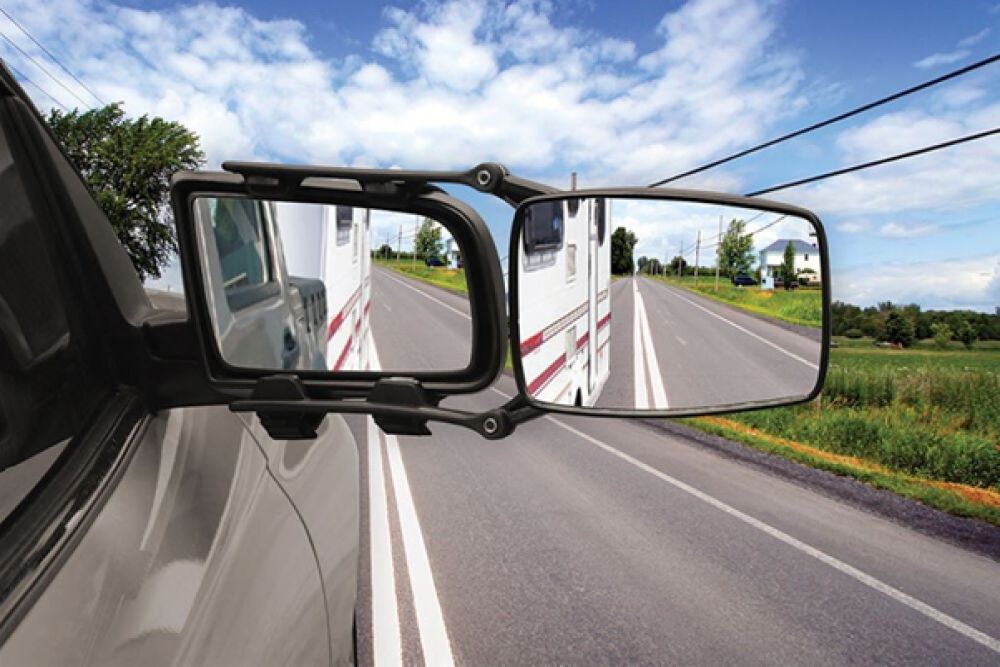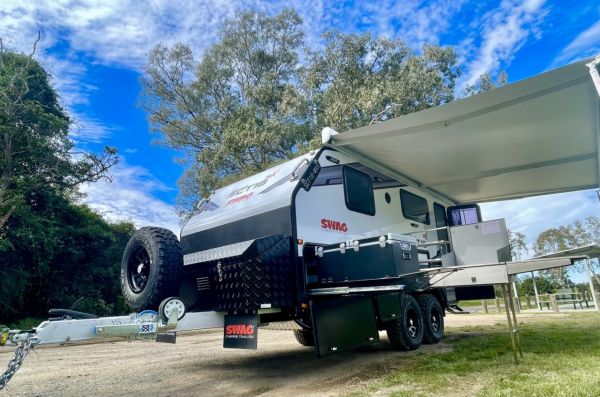
Caravan Towing and Weights Guide: Understanding Tow Capacity
Caravan towing is not just about connecting your vehicle to your caravan and hitting the road. One of the most critical aspects of purchasing a caravan is understanding its towing weights and the towing capacity of the vehicle that will pull it, as a lack of knowledge in this area can prove costly or even fatal.
In this article, we'll walk you through some of the terms you need to be aware of when it comes to caravan towing and towing capacity, and offer some advice to help you stay safe after you've hitched up and hit the road.

Why Towing Correctly Matters
Firstly, if you tow your caravan incorrectly, insurance companies might refuse to cover any damages, leaving you with potentially significant out-of-pocket expenses. Additionally, towing a caravan that's overweight isn't just a safety hazard—it's illegal. This can lead to fines, or in more severe cases, your caravan could be seized by authorities.
When a caravan isn't loaded correctly, it can sway while being driven, posing a serious risk to both the driver and others on the road. Beyond the immediate danger, there's also the potential for long-term damage to your vehicle. Incorrect loading can strain the tow vehicle’s motor, tow bar, and other essential components.
So, before you hit the road, it's vital to spend time understanding towing weights. You never know when you might need to make a sudden stop or manoeuvre to avoid an obstacle, and in such moments, an incorrectly loaded caravan could spell disaster.
Getting to Know Tow Vehicle Specifications
When it comes to towing, not all vehicles are created equal. Each tow vehicle manufacturer has a unique set of towing specifications, outlining precisely what their vehicles can handle. The single most important metric to understand is the maximum towing capacity, which indicates the maximum weight a vehicle can pull. In addition to the towing capacity, there is also the kerb weight, which is the weight of the tow vehicle as it was built, without any passengers or cargo but equipped with all necessary fluids, including a full tank of fuel.

Other crucial terms to learn include the tare weight, maximum tow ball mass (which refers to the maximum weight that can be transferred from the caravan's coupling to the vehicle's tow ball), gross combination mass (the weight of your tow vehicle and caravan together, including passengers, cargo and fluids) and gross vehicle mass (GVM), which refers to the vehicle plus its occupants and cargo.
While it may sound daunting at first, most of this information is readily available. A good place to start is the owner’s manual of the vehicle. If that's not available, many of these details can be found inside the doorframe of your vehicle. Alternatively, a quick online search, specifying the vehicle's make and model, should yield the required information.
Decoding Caravan Weights
Caravans come with their own set of weights and measurements, and any prospective caravan owner needs to understand these.
Tare Weight
The tare weight of a caravan refers to its empty weight, accounting for all accessories fitted during its manufacture. However, it doesn't include any aftermarket additions or the weight of full gas bottles and water tanks.
Tow Ball Weight
Another critical metric is the tow ball mass, which signifies the weight the caravan’s coupling exerts on the tow vehicle. This weight can change based on how the caravan is loaded, with factors like luggage and the amount of water or gas it's carrying affecting the final figure. However, the weight on the compliance plate will be the empty tow ball weight as it leaves the factory.
Aggregate Trailer Mass (ATM)

The aggregate trailer mass of a caravan is its maximum weight when fully loaded and unhitched from your tow vehicle. Aggregate trailer mass includes the weight of the caravan, any modifications you have made, and all of its cargo, including gas bottles, luggage, water, etc.
The aggregate trailer mass is set by the caravan manufacturer when it is built and must not be exceeded under any circumstances.
Gross Trailer Mass (GTM)

Gross trailer mass refers to the maximum total weight on the axles of your caravan when it is hitched to your tow vehicle. The GTM differs from the ATM due to the fact that the tow ball weight is being carried by the car and not the jockey wheel when your caravan is hitched.
If you ever need to calculate your GTM, simply subtract the tow ball weight from the caravan's ATM.
Payload
The caravan's payload tells you how much weight you can add to it and includes all of its contents, from modifications to water in the tanks, food on the shelves, and clothes in the cupboards.
You can calculate the payload by subtracting the caravan's TARE weight from the ATM.
Tow with Knowledge & Protect Yourself On the Road

Now that we've broken down the essentials, it becomes clear how vital understanding these weights is. To ensure a safe and enjoyable caravanning experience, consider creating a detailed list of both your vehicle's and caravan's weights and capacities and keep them near at hand. By being aware of these details, you're not only adhering to regulations but also ensuring the safety of everyone involved.
Whether you're a seasoned caravan owner or just starting out, it pays to review these figures regularly to avoid overloading your caravan, allowing you to tow with confidence.
Found your perfect purchase? Let’s make financing just as easy!
Work with Australia’s best-reviewed finance broker for a great deal and a stress-free experience. With 2,500+ glowing Google reviews, you can trust you're in good hands! See what our happy customers say in Credit One reviews, or jump right in and crunch the numbers with our handy loan repayment calculator. Your ideal financing solution is just a few clicks away!



